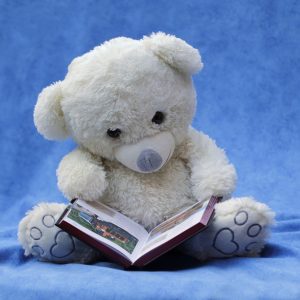Goals

Brief description of the issue
In many areas of the Gaspé and the Magdalen Islands, books are difficult to access. Access to books that promote gender-equal relationships is then much more complex. With the gender-equal book kit or the gender-equal book assessment grid, a child’s parents, educators and relatives can have access or find books free of gender stereotypes and, with this present tool, lead emerging literacy activities that do not reinforce gender stereotypes for boys and girls.
What is a gender stereotype?
According to UN Human Rights, a gender stereotype is “a generalised view or preconception about attributes or characteristics, or the roles that are or ought to be possessed by, or performed by women and men. A gender stereotype is harmful when it limits women’s and men’s capacity to develop their personal abilities, pursue their professional careers and make choices about their lives.”
Many people falsely believe that gender stereotypes are characteristics that boys and girls have since they were born. Following on this logic, girls would be naturally soft, caring for others, cooperative and would like pink. On their side, boys would be naturally independent, competitive, logical, reckless and aggressive. Yet, no innate behavioural difference between boys and girls has been scientifically proven (Vidal, 2015).
Activities
Emerging literacy activities aren’t limited to reading a book out loud. Here are a few turnkey activities that can help you foster emerging literacy with boys and girls while challenging gender stereotypes at the same time.
Jobs
Read a book that touches on jobs (for example, I Want to be an Astronaut or My Name is Not Isabella). Try to choose a book that presents non-stereotypical jobs (for example, a female mechanic or a male nurse). As you read the book, ask children if they know people practising these professions. If possible, try to make the point that men and women can be anything they want to be. Once reading is over, invite children to dress up as someone practising a job of their choice. Encourage children to choose a profession no matter what their gender is.
It can be interesting to pair this activity with another one with real people doing these jobs, but that are in a non-traditional field for their gender. For example, you could invite a male elementary teacher and a female truck driver. Try not to present these persons as doing something exceptional or weird. During early childhood, children develop their gender identity and their vision of gender roles. Meeting men and women doing non-traditional jobs will help them associate these professions with both sexes and understand that everything is possible for them.
Cooking activity
There are many books showcasing healthy recipes easy to cook with young children. Of course, it is preferable to pick a book with lots of images, but that also has text associated with each image. Thus, you can show children that you need to know how to read to cook the recipe, that we read from left to right and from the top of the page to the bottom in a book, etc. Here are a few recipe books for children that are particularly well put:
- 10 best kids’ cookbooks to get little ones inspired in the kitchen
- The 13 best cookbooks for kids who like to cook
Symbols hunt
Being able to read also means reading day-to-day pictograms and symbols, that we can find on buildings’ doors or inside them (exit, pull, push, toilets, access forbidden, wet floors, etc.) as well as outside, on the road (park, road signs, street names, etc.). It is thus possible to show symbols to children on posters and then to go out for a “symbols hunt” where children have to find the symbols they’ve been shown and find out what they mean. It is an excellent way of mixing reading and motor activities in order to reach the interests of more children and to allow them to develop a greater array of skills. To pursue this activity with an emerging writing activity, children can draw the symbols they found during the hunt.
Guest storyteller
As most of the reading models children have in early childhood centers are women, it can be interesting to invite men from the community to come and read a book with children. It provides them with a positive male role model and can help combat the stereotypical belief that reading is a feminine activity only. You can invite children’s fathers, grandfathers, godfathers, big brothers or uncles in turn, as you can also invite men involved in the community (teachers, pastors, volunteers, retirees, etc.).
References
UN Human Rights, 2019. “Gender stereotyping”, page consulted on August 7, 2019, accessible at: https://www.ohchr.org/EN/Issues/Women/WRGS/Pages/GenderStereotypes.aspx
VIDAL, Catherine (2015). Nos cerveaux, tous pareils, tous différents ! Laboratoire de l’Égalité, Éditions Belin, 79 pages.
